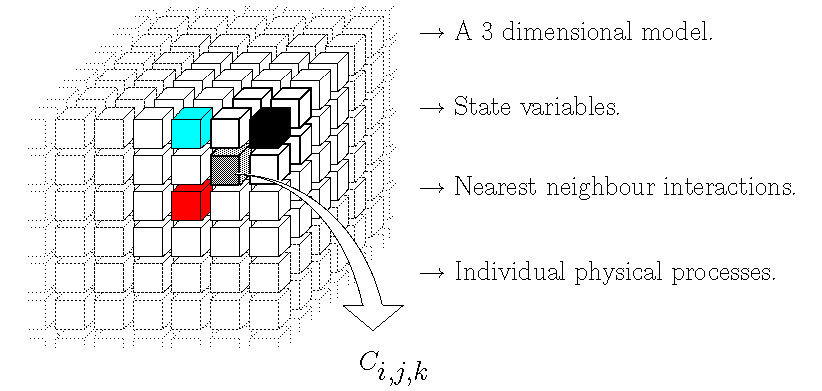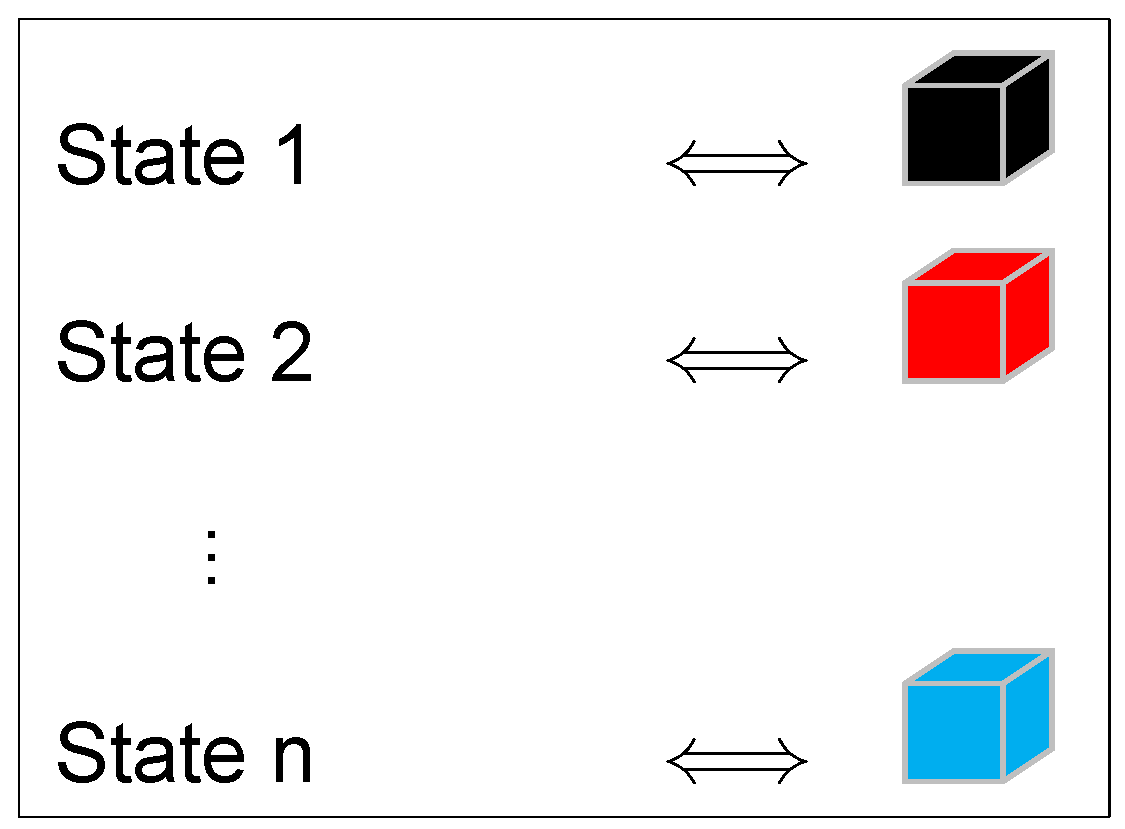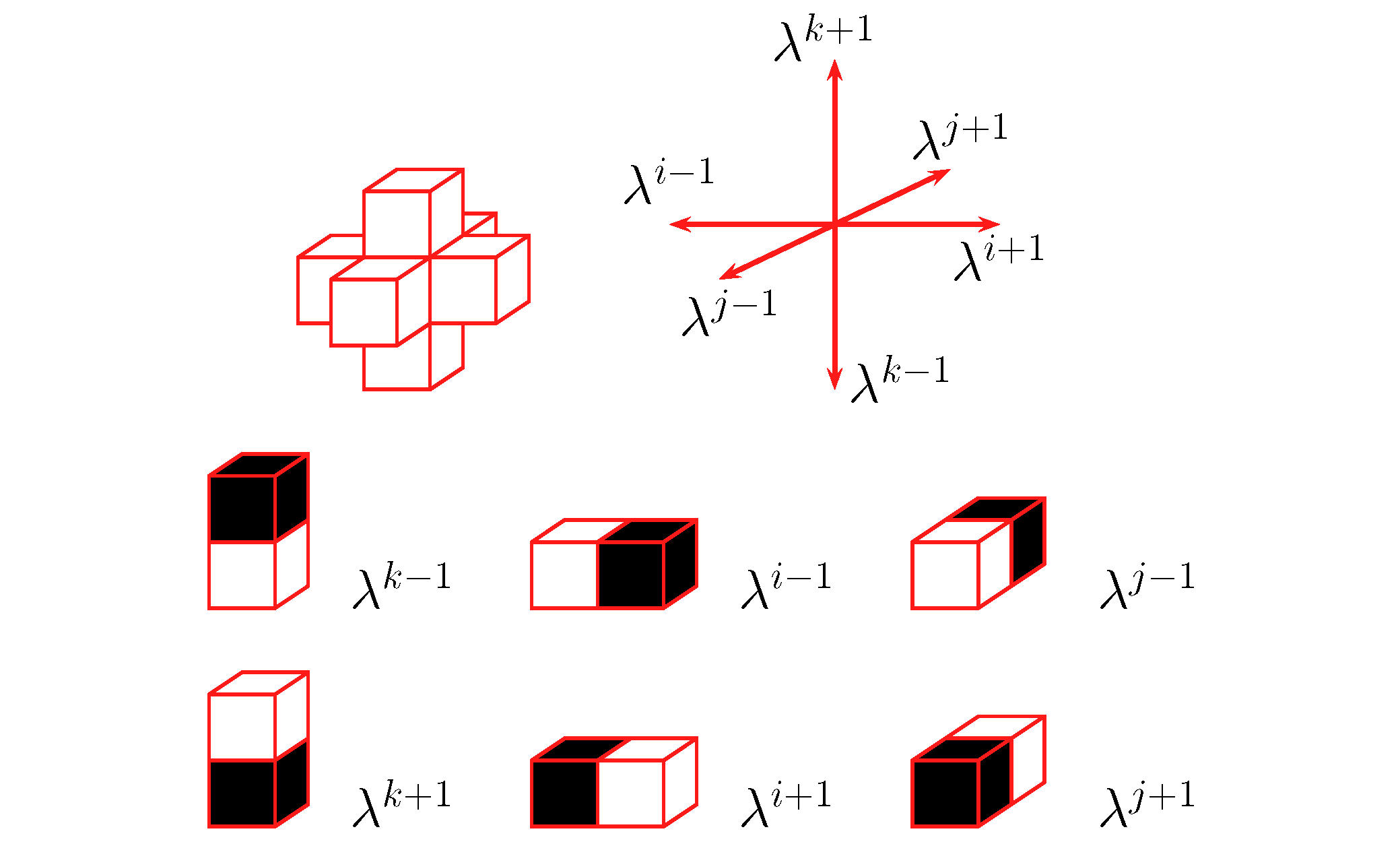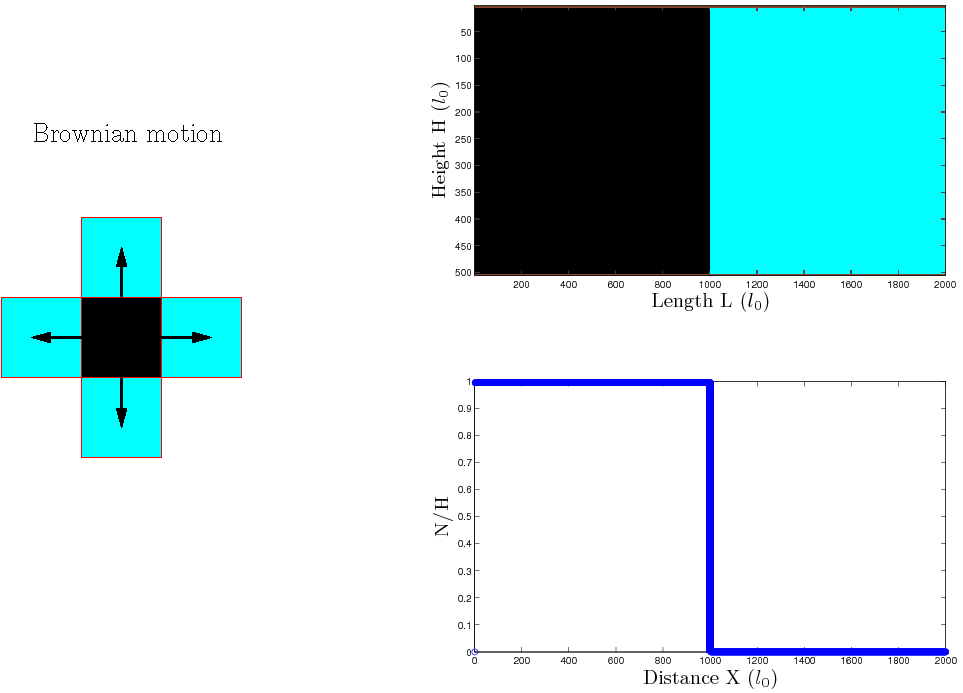
\  |
|
An elementary cell is a cube of edge length l0
and pairs of nearest neighbour cells are called `doublet'. For each
individual physical process that we take into account, there is a set
of doublet transitions.
Each transition is associated with a rate parameter with units of frequency that introduces into the model the characteristic time scale of the corresponding physical mechanism. Doublets are all supposed to be independent and the occurrence of a transition of doublet is assumed to follow a stochastic process. |
 |
Using this approach we can model a wide range of physical-chemical or anthropological processes.
See applications in geosciences in Narteau et al. (2001) and Narteau et al. (2009) .
For example, we can study molecular diffusion in 2-D, with 2 states (Air =
 ; Molecule =
; Molecule =  ) and four transitions for the random motions
) and four transitions for the random motions  particules (see the animation):
particules (see the animation):